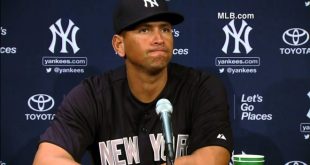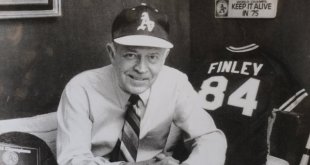When news first came out that Alex Rodriguez would be playing his last game with the Yankees on Friday, August 12, it was widely assumed it would be his last Major League Baseball game - period. In his Sunday, August 7 morning press conference, Rodriguez and Yankees’ GM Brian Cashman explained that A-Rod would be released as a player after the game Friday night game against the Rays, but that A-Rod would sign a contract with the Yankees for a nominal amount to serve as an “adviser” through 2017.
This seemed like the Yankees trying to make the best of a bad situation. MLB contracts are fully guaranteed, and A-Rod did not retire, so the Yankees are required to pay him the $26.5 million remaining on the behemoth 10-year, $275 million contract they signed him to on December 13, 2007. One can imagine Brian Cashman and Hal Steinbrenner pleading with A-Rod to just officially call it a career at the end of 2016, like Mark Teixeira did, but Rodriguez decided that he still wanted to get paid. So, the Yankees fashioned a plan in which the Yankees will get a little bit of return on their investment in 2017, and Rodriguez will become the highest paid “adviser” in the history of ever.
Except, A-Rod may not be done playing ball. There was talk that the Miami Marlins, still in the hunt for the National League wild card but reeling from the season-ending injury to their brittle superstar Giancarlo Stanton, might sign A-Rod to play first base and pinch hit when necessary. But Rodriguez’s camp put out a statement Monday quashing all rumors about A-Rod playing again this year.
But even if you believe that A-Rod won’t play again this year, there’s still a strong possibility he could play for a team next year. One can certainly see why he would want to come back. He’s four home runs away from 700 and is on record stating that he thinks he can still play. Not only that, but he’s spent more than half his life playing Major League Baseball. It would make sense that he’d get antsy and want to give it one more go next year.
And perhaps even more importantly, signing A-Rod represents very little risk for the 29 teams that won’t be paying him $21 million next year. When a player is unconditionally released he must be placed on waivers for 48 hours to give all other teams an opportunity to claim him. In A-Rod’s case, there was virtually no chance any team would claim him, since the claiming team would essentially be trading for Rodriguez’s contract and would be on the hook to pay him $26.5 million through the end of 2017. No team claimed him during the 48 hour waiver period, so A-Rod is now a free agent.
Because his contract is, like all other MLB player contracts, fully guaranteed, the Yankees will end up paying A-Rod the full remaining amount on his contract through 2017 whether he serves as an adviser for the Yankees or plays ball for anyone else next year. Any team that signs Rodriguez to a contract would be able to pay him the league minimum, which would offset the Yankees obligation, and the Yankees would pay the rest. For example, say the minimum salary remains $507,500 for the 2017 season, and say Rodriguez decides against serving as an adviser for New York and signs with the Marlins for 2017. The Marlins would pay Rodriguez $507,500, while the Yankees will pay the remaining $20,492,500. Thus, there’s very little risk if an injury-depleted playoff contender or a money-starved publicity seeking team decides to sign Rodriguez at some point this or next year.
It could come down to whether Rodriguez’s urge to get back on the field outweighs his desire to be a part of the organization that he won a World Series with in 2009. Could playing in 2017 jeopardize his chance to serve as an adviser for the Yankees? Maybe. But for what it’s worth, Steinbrenner said it wouldn’t. He calls the situation “flexible.”
 The Sports Esquires Putting Sports on Trial
The Sports Esquires Putting Sports on Trial





One comment
Pingback: Sports Law Links - The Sports Esquires